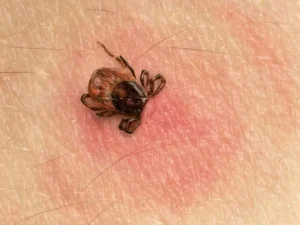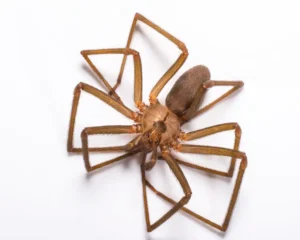 There are a lot of bugs out there that can bite you (or sting) but what bug bites do you need to be concerned about the most?
There are a lot of bugs out there that can bite you (or sting) but what bug bites do you need to be concerned about the most?
1. Deer Tick Bite
The deer tick is the primary cause for Lyme Disease today. Lyme Disease for decades as been more of a northeastern United States issue which has made it difficult for an accurate diagnosis. But in recent years has shown up all over the United States and medical professionals are getting more familiar with the tick bite and Lyme Disease. The primary tick to be concerned with is the Deer Tick (aka. Blacklegged Tick) and the transfer of bacteria from their bite. If you are bit by a Deer Tick then it is a good idea to keep the tick for positive identification and to visit a medical doctor. If you did not notice a tick bite, of a bite without being able to identify the tick, then be on vigil for the distinctive ‘bullseye’ rash.
2. Brown Recluse Bite
The brown recluse spider is one of three venomous spiders in the United States, one of two which we find here in Tennessee (and the Southeast in general). Identifying brown recluse spiders can be confusing to many people. When they bite a person it is usually when the spider has been trapped against a person (in a shoe, under sheets or pillow, etc). The venomous bite is generally not fatal but has been attributed to creating circumstances that lead to death (think of a severe allergic reaction). Most often the brown recluse bite will create a skin lesion. The lesion can be severe enough to require professional medical treatment. If you have a brown recluse bite seek out medical support.
3. Black Widow Bite
The black widow spider, unlike the brown recluse, is quite easy to identify. They are dark black and have a nice bright red splash of color on their back (often hourglass in shape). The black widow spider can be found in areas that have some clutter or coverage that are not disturbed by humans. Basements can be common for inside the house, woodpiles or sheds can be common for outside the home. The bite does not leave big distinctive marks in comparison to what insect bites we have already mentioned. You will likely have pain centering around the black widow spider bite that will shift into the abdomen and back. Cramping, sweating and a host of other symptoms will follow the initial bite pain. Seek medical support with the first 8 hours of a bite. Be sure to try and capture the spider to get a solid identification.
OSHA Black Widow Spider Facts PDF
Other bug bites that you should be concerned about are mosquito bites and bee stings. The mosquito bites could lead to acquiring a disease such as West Nile Virus or Chikungunya. Bee stings can be a huge concern when someone is allergic to the stings. In the case of young children one may not know if they are allergic to bee stings yet, so adequate precautions should be taken.
 But Where do Brown Recluse Spiders Live?
But Where do Brown Recluse Spiders Live?